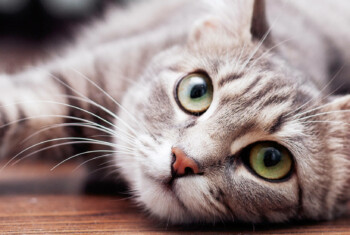Pyothorax in dogs and cats: Signs, treatment and prognosis.
The chest contains various structures such as the heart, lungs and esophagus. The chest cavity in which the organs or located is called the pleural space. Pyothorax is an accumulation of fluid that contains an infectious (usually bacteria) agent and immune system cells in the space surrounding the lungs and heart.
Causes.
Often the original cause for this disease can be difficult to identify. Some of the known causes include:
- A penetrating wound through the chest wall
- A foreign body traveling through tissues around the chest wall
- Holes that were created in the esophagus or trachea (or other airway into the lungs)
- A ruptured lung abscess
- An extension of pneumonia
- Postoperative infection or by spreading from the blood
Pyothorax can also be idiopathic (a totally unknown cause), especially in cats.
Signs and symptoms.
The first sign usually noticed is that the pet has trouble breathing (described as dyspnea). The pet may be breathing more rapidly, having to make more of an effort to breathe, the belly may be moving a lot to help the pet breathe or the pet may stretch out its head and neck in an effort to breathe.
Usually the pet will make a forceful effort to breathe inwards and then seem like it’s holding its breath before exhaling. The owner may also notice that the pet seems quieter, less active or even depressed. The pet may also stop eating and begin to lose weight.
Your veterinarian may find several clues based on a physical exam including a change or decrease in the ability to hear air moving through the lungs, evidence of a wound or signs of shock.
Diagnosis.
The main tool of diagnosis is to find septic exudates, or fluid, within the chest cavity. The veterinarian can use radiographs (x-rays) and collection of the fluid from within the chest cavity (thoracocentesis).
The fluid is then analyzed under a microscope to determine which cells are present and by submitting to a laboratory to determine the composition, or chemical make-up, of the fluid. The fluid may contain bacteria, plant material or no evidence of infection.
Generally the fluid is cultured – meaning that a small amount of the fluid is placed on a special plate of growth material that can be monitored closely in a laboratory for bacterial growth. This growth can then be analyzed under a microscope and also used to determine which antibiotic would be most effective.
Treatment.
The choice to treat the pet, once diagnosed, must be made very quickly and aggressive action is essential. A pet with pyothorax can progress into septic shock, or a state in which the heart and blood vessels are not able to function properly and therefore can’t pump blood through the body well.
In an emergency situation, your veterinarian can place a small needle into the chest and try to withdraw some fluid, to relieve the pressure surrounding the lungs and heart and allow the pet to breathe easier. The pet must be hospitalized and receive intravenous (directly into a blood vessel) fluids and medications, especially antibiotics.
In addition, a chest tube is usually placed. This is a sterile tube that is passed through the chest wall into the space around the lungs while the pet is under anesthesia. This tube is connected to a system that creates continuous suction to withdraw remaining fluid. This tube is usually in place for a few (5-7) days. Warm sterile water can be pumped into the space around the lungs and heart and then withdrawn through the chest tube in an effort to help clear out remaining debris – this is termed thoracic lavage.
Surgery may be necessary in an occasional case, especially if the veterinarian suspects an abscess in the lungs or a foreign body. If the pet responds well the initial aggressive treatment, then appropriate antibiotics will be necessary for several weeks (4-8 weeks) with serial monitoring of progress.
Potential complications.
If an inciting cause can be identified, there may be an entirely different set of complications associated, depending on the cause. However, no matter what the cause of pyothorax, the most serious, life-threatening complication is fibrosing pleuritis. In other words, a condition in which the very thin, delicate lining of tissue around the lungs becomes so thickened and inflamed secondary to the material that was within the chest cavity, that it prevents the lungs from stretching during breathing.
In effect, the very thin tissue becomes a very thickened sheet of scar tissue surrounding the lungs and prevents them from expanding, which means they can’t receive enough oxygen to maintain vital functions. This can be slow to develop or happen very quickly – in either case, there is no medical or surgical management available to treat or slow down this process. Unfortunately, many pets must be humanely euthanized at this end-stage of any pleural space disease
Prognosis.
The prognosis can range from good to grave, depending on the cause and outcome of treatment.
Learn more about this disease by contacting our Surgery service at your nearest BluePearl pet hospital.


